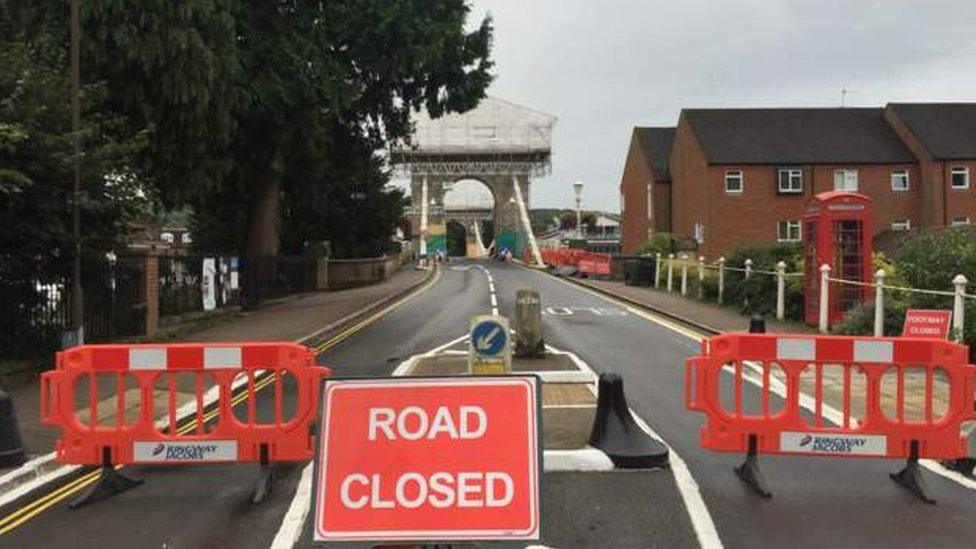Trent Bridge at 150 years: A tale of floods, football and sheep
- Published
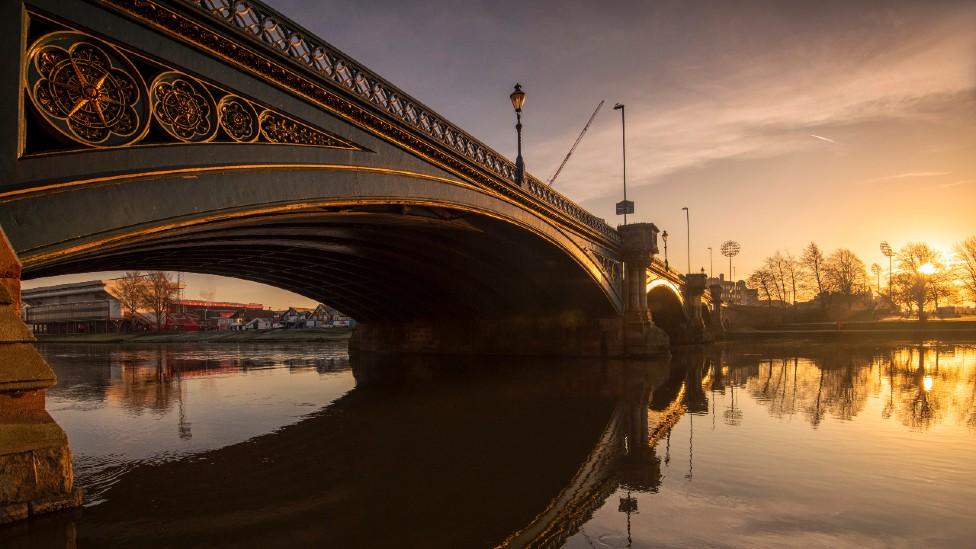
Trent Bridge in 2020, showing glimpses of the two sports stadium - for football and cricket - beyond
A bridge - once held to be second only to London's in importance - is celebrating its 150th anniversary.
Nottingham's Trent Bridge - now best known for the neighbouring cricket ground - has seen floods, wars and a few flocks of sheep.
While the current Grade II listed structure dates back to 1871, the history of the bridge goes back to the time of the Saxons.
It is believed the first bridge was constructed out of timber around 920 as king Edward the Elder consolidated his power in the area after defeating the Vikings.

Nottingham worthies pondered long and hard a replacement for the old bridge
This structure, perhaps the first major bridge in England built since the time of the Romans, served for more than 200 years until replaced by an arched stone crossing in 1156.
Local historian Chris Weir said: "Bridges were vital - especially on a river as ferocious as the Trent.
"Here it is wide enough to cut the region in two - it has swirling currents and after rain, the level can rise dangerously quickly.
"Ferries were unreliable and unsafe, people drowned, so a solid bridge would have made the area very important."

For a few months the two bridges, old and new, stood side by side
Centuries of use - and sporadic repairs - followed but disaster struck in 1636 when one of the arches of what was then known as the Heth bridge collapsed.
The English Civil War of 1642-48 battered it further until one of the regular floods - this one in 1683 - swept part of it away.
Mr Weir said: "It was flooding which really spelled the end. In 1795 large areas were inundated.
"It was described in city records as a 'most remarkable flood' which 'carried timber and sheep into the Trent'. It 'inflicted great damage... newly built houses in the Meadow-plats were invaded by the insidious element'.
"An Act of Parliament was passed to regulate building in the area and it also looked into a replacement bridge but initial quotes were always too expensive."
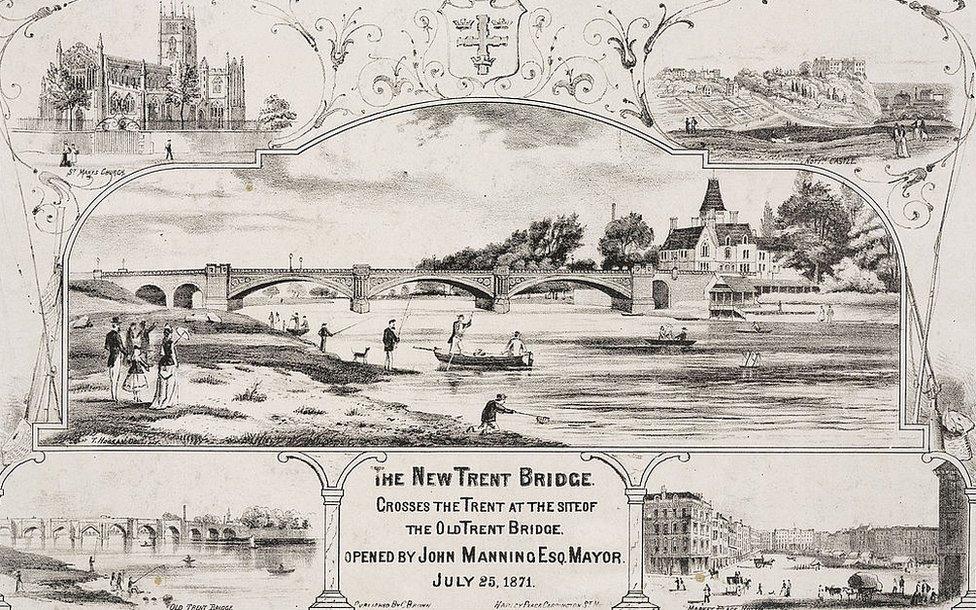
Nottingham was very proud of its new bridge and produced cards to celebrate it
Again repaired, the old Heth bridge enjoyed a final moment of glory when Queen Victoria and Prince Albert crossed in 1840. A coat of arms decorates the bridge still, in memory of the occasion.
But its replacement had finally been approved and a more graceful iron and stone structure was designed by the borough engineer, the impressively named Marriott Ogle Tarbotton.
For a few months the two bridges were left standing side by side, before the older was demolished.
It is not completely gone however - with a tiny section left isolated among the bustling traffic of the heavily remodelled south embankment.

Sporting crowds, as well as countless commuters and residents, have used the bridge for 150 years, here in the early 1900s
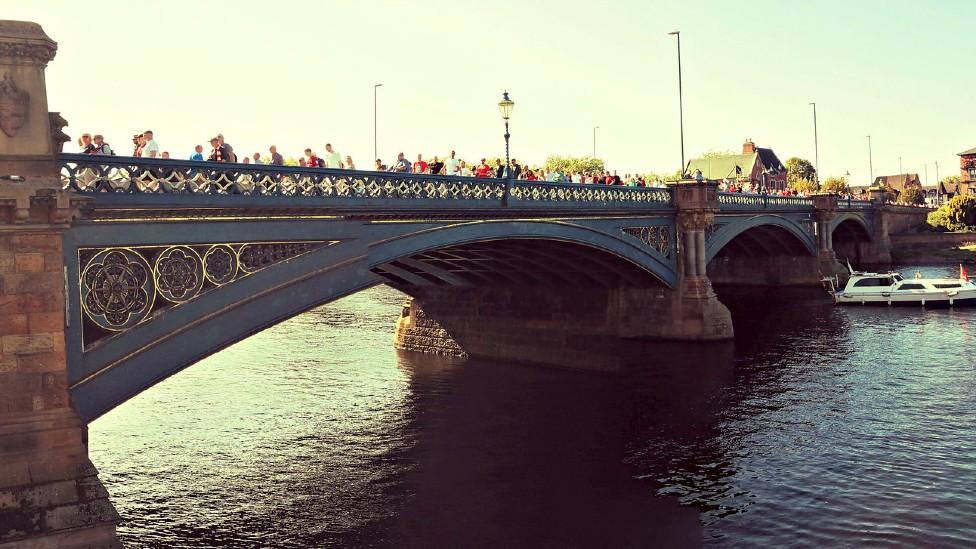
And here in 2019
This is not the only trace of its former incarnation. On the northern abutment of the bridge you can view the 'flood marks' carved into the stonework, including levels from 1852 transferred from the older structure.
The highest flood mark is from October 1875.
The new design, costing £36,000, was criticised by some for being too ambitious and too wide. But it had to be further widened in 1926 to cope with increasing traffic levels.
Since then it has played an important role in local life, from the everyday commute to sporting crowds and again hosting royalty during the Queen's 1977 Silver Jubilee tour.
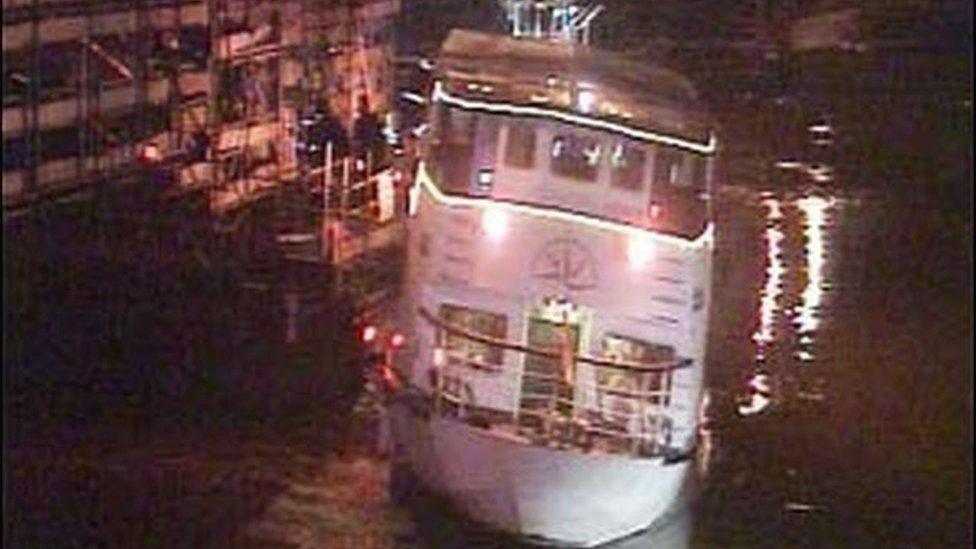
The Nottingham Princess struck the bridge in 2002 after being caught in fast moving water
Occasionally honorary Freemen of the City exercise their traditional right to drive sheep across it - though with nearly 50,000 vehicles crossing every day, this is not recommended by police.
It also saw a near tragedy in November 2002, when the pleasure cruiser Nottingham Princess crashed into it during high water levels.
Fortunately none of the 131 people on board were badly injured.
Councillor Rosemary Healy, Nottingham City Council's Portfolio Holder for Transport, said: "Trent Bridge is undoubtedly one of the key gateways to the city. It's been beautifully preserved and maintained, and is a well-recognised landmark.
"It provides a stunning backdrop to important events such as the Riverside Festival, and to anyone spending time on Victoria Embankment, while thousands of sports fans have used it for generations to get to and from games at the nearby venues."

Follow BBC East Midlands on Facebook, external, on Twitter, external, or on Instagram, external. Send your story ideas to eastmidsnews@bbc.co.uk, external.
Related topics
- Published16 June 2021

- Published3 January 2020
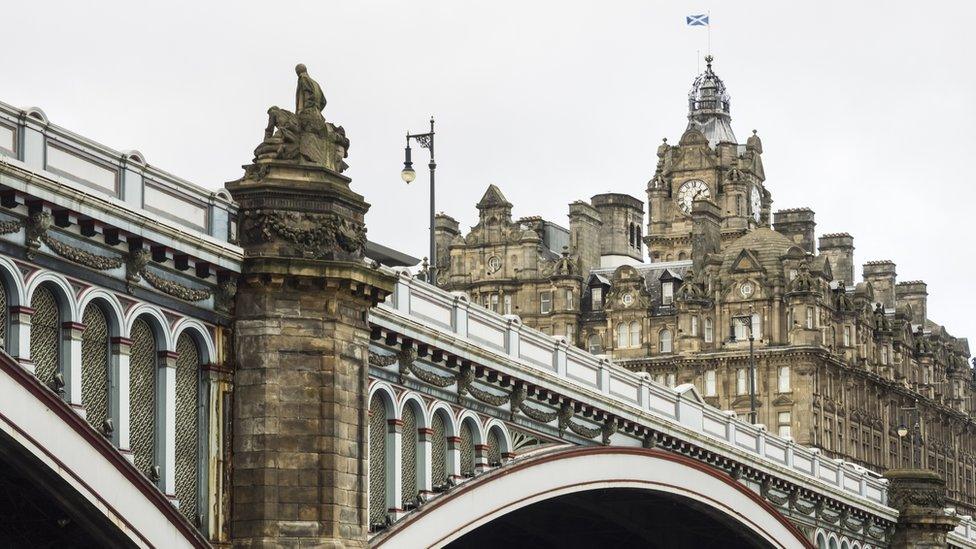
- Published10 March 2017
